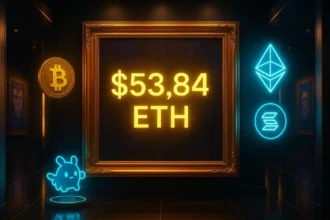
While Web3 Gaming saw an increase in gaming and user activity in October, DeFi struggled during the month hit by capital losses, protocol stress, and regulatory pressure.
New ecosystem data shows gaming is becoming a dominant force on-chain, a positive impression as stalled DeFi projects struggle to cope with an increasingly turbulent market and talks narrow over key jurisdictions.
This contrast also highlights the divisions occurring within Web3, with entertainment-focused apps gaining traction alongside financial protocols that are under attack from both external and internal interests.
Web3 games gain momentum
Blockchain games have also made inroads slight decrease General Web3 usage. However, the number of daily active wallets on Web3’s network actually decreased by 3% to approximately 16 million.
Meanwhile, game-based activity as a percentage of total activity increased to 27.9%, the highest this year. These integrations extend beyond gaming to include user onboarding, gameplay experiences, and expanding reach across multiple blockchain networks.
Solana, BNB Chain, and Polygon are the main contributors to this activity, along with Raydium and pump fanJupiterExchange, OKX Dex, and PancakeSwap v2. These platforms could benefit from social trading, lower transaction costs, and increased liquidity.
NFT transactions also skyrocketed. Overall NFT trading volume increased 30% to $546 million, with over 10.1 million transactions, the highest for any month in 2025. Gaming-related digital assets and NFTs, which support utilities integrated with gaming, loyalty programs, and virtual identity customization, were among the biggest volume boosters. This transition has occurred from the world of speculative collectibles to the world of active, interactive digital artefacts.
DeFi absorbs and responds to losses
October was a bad month for DeFi, losing 6.3% of its TVL last month to end the period at $221 billion, before falling even further to $193 billion at the beginning of November. The decline occurred after a severe market crash on October 10 that led to large-scale liquidations. Roughly $20 billion in leveraged positions on major exchanges and lending platforms were wiped out within days.
The lawsuit itself got worse as DeFi protocol Stream Finance lost $93 million. This episode highlighted the broader systemic risks that can be posed by stablecoins and collateralized lending. Analysts later identified at least $284 million more exposure from similar themes in other DeFi systems.
Regulatory pressures compounded the stress. A group of Senate Democrats has called for implementing know-your-customer (KYC) requirements for non-custodial wallets. News of the proposal received mixed reactions, with industry observers speculating that the requirement to identify customers using self-custodial wallets could discourage innovation that favors property-like ownership between users and looser rules across a more accommodative regulatory environment.
In response, Ethereum companies have banded together to lobby. A coalition of projects including Aave, Uniswap, Lido, Curve, and The Graph have formed the Ethereum Protocol Advocacy Alliance. The coalition argues that decentralized infrastructure should also be included in the discussion when discussing regulation, and that blockchain networks should remain open access.
Elsewhere, Oracle network RedStone has introduced a new platform called Credora that aims to provide consistent risk and credit scores across the decentralized finance (DeFi) lending market. The system is designed to increase trading transparency and reduce the systemic risks inherent in particularly overleveraged credit markets.
The smartest crypto minds are already reading our newsletter. Do you want to join? Please join us.






